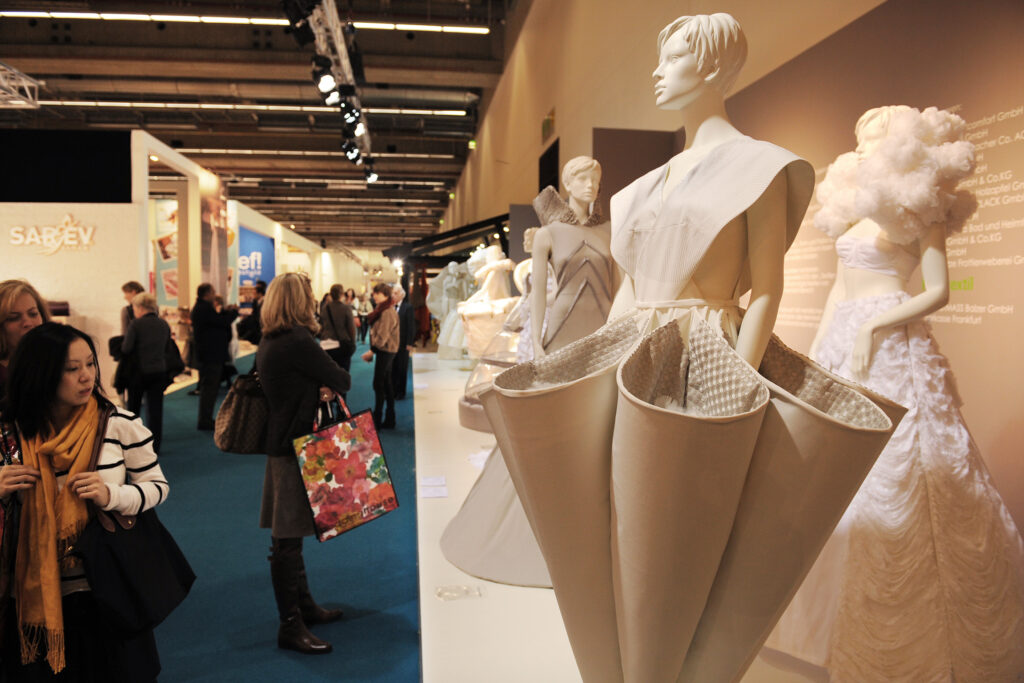Trade shows and exhibitions do present something of a quandary for businesses in more protective regions.
Imagine that you own a successful furniture shop in your home town, happily supplying chairs and tables to small businesses and individuals, and making enough money to educate your children, take your family away on holiday once or twice a year, and save for the future. Perhaps you are not the only person in the town who does this. Your neighbour also runs a furniture business, catering for a similar clientele, but in a town of this size both businesses are sustainable and co-exist happily enough, perhaps even to the benefit of the townspeople as the situation negates any chance of a monopoly and ultimately improves the quality of your – and your competitor’s – products through competition. And perhaps you two are not alone: the town has a reputation for making some of the finest furniture in the region, perhaps the world.
One day a bright spark at the local government offices decides the town needs to shout about its furniture-making, and working together with a local businessman and venue owner the creation of a new furniture show to promote the town’s proud furniture heritage to a wider audience is announced.
Before long, 20 or 30 companies involved in furniture-making and related industries have gathered to pitch their wares to a crowd drawn from far and wide. The event is a great success. Your own orders are through the roof, and you have a new wood supplier. What’s more, your costs are down, the bottom line has improved and you’re shifting more product than ever. The show has an audience and develops a reputation as a place where furniture is bought and sold in great quantity.
Then the local businessman who runs the show gets a call. Ten companies from outside the town have got word of what’s going on and want to have a chance to showcase their wares; they will pay handsomely for the privilege. The venue owner has upped his price because he knows the show is making plenty and there’s nowhere else large enough to house the event. The presiding businessman agrees to this increase; he’s in this to make money after all, as he is neither a furniture salesman nor a maker. He makes money from the event and the event alone.
The ten new exhibitors are followed the subsequent year by 20 more, and before long the show has become the region’s defining furniture fair. Now 300 exhibitors man the stands from all over the world, and competition is fierce. The initial 20 or 30 traditional exhibitors from the town in which it is staged have to compete with low-cost providers from China, and modern, high-fashion design from Scandinavia and the UK. Their initial market now has choice and has become far more selective in where it goes for its furniture; the very nature of your traditional, rooted-in-the-region furniture has marginalised it to the point whereby it is seen as unimaginative, perhaps even dated.

Then the town is burdened by an economic crisis. Soon only the wealthy can afford your handmade furniture, and they are keen on differentiation anyway – they favour the clean-cut Nordic designs. The rest put their orders in at the Chinese stands, where they can get a lot more for their money if they are prepared to overlook the lack of a cherished brand or any other such mark of exclusivity.
Your market is no longer captive, and your orders start to dry up. With mounting panic you speak to the organisers and see if they will reduce your cost for attendance. They say the demand for space at the event is too high for that. So you contact the local government and see if they will provide financial assistance as befits a body hoping to promote local business. They do what they can and offer a grant here and there, but these are small gains. The outlook is bleak.
But that is not where the story ends.
One day, a friend suggests that you attend another event elsewhere, somewhere your products may be seen as new and interesting. And your work, due to its quality, does sell. Now, 60 per cent of your business comes from outside your home town, with many of these clients being from overseas. Almost without knowing it, you’ve moved to an export model.
And you don’t have to go it alone. Your local government friends, still keen to promote the town as a centre of excellence for furniture design, assist in the creation of a show pavilion for you and your local competitors. You make a unified attendance at a prestigious event, comprising only the best from the region. The inferior companies being carried by virtue of their location are seen for what they are, and by losing them your town’s identity as a place for quality furniture design and manufacture is improved.
Your business returns to strength.
This is the global economy in action and in it the merits of true competition are demonstrated clearly. And it is all facilitated by exhibitions. Although this furniture seller’s business may have been more secure in the early days, today he has a brand that stands out and trades in the international marketplace. It is influenced by trends and demands from around the world, it is created to internationally recognised standards, and it generates discussion that results in the progress of the industry.


Leave a Reply